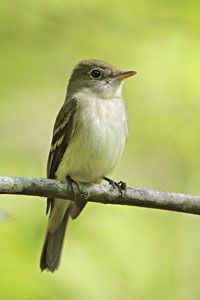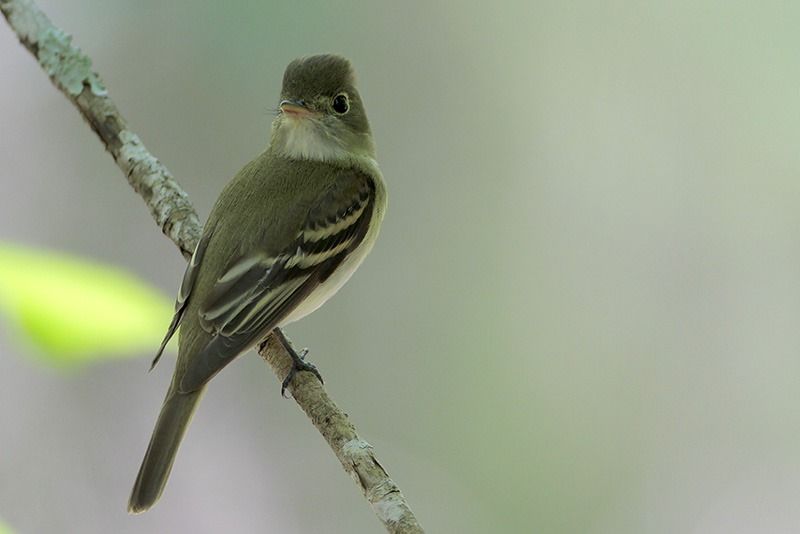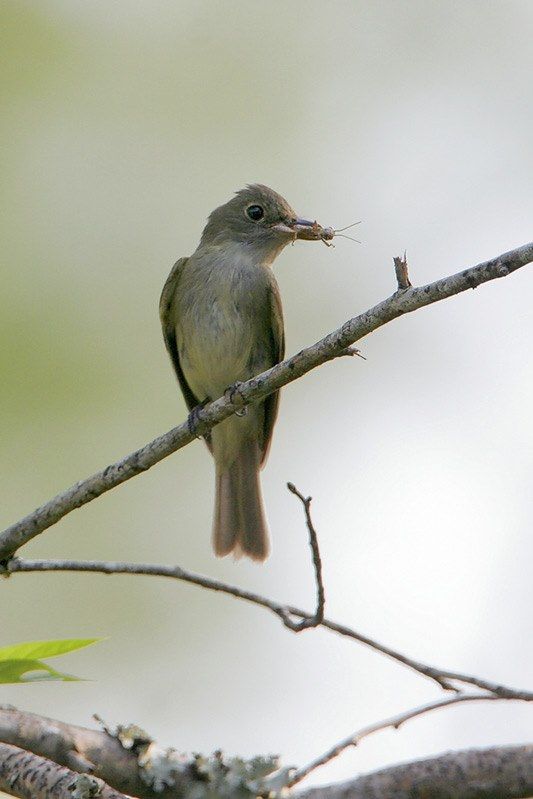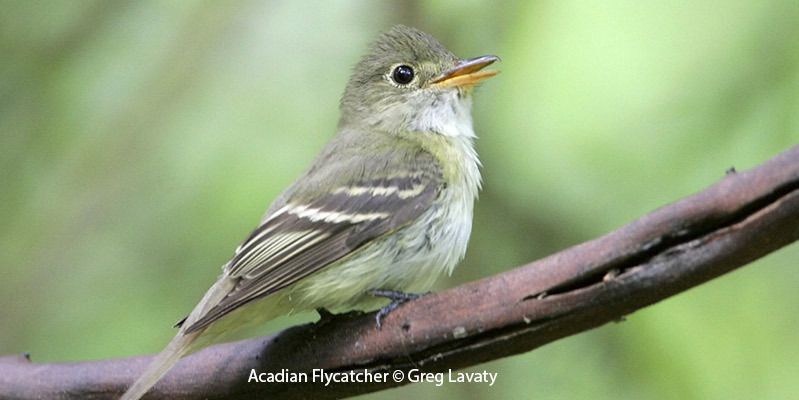
© Greg Lavaty
Acadian Flycatcher
Empidonax virescens
Family: (Tyrannidae) Tyrant Flycatchers
Preferred Habitat: Deciduous woodlands
Seasonal Occurrence: Most common spring and fall; an uncommon breeder in our area.
Notes by Susan Billetdeaux: One of the confusing "empids" (grayish plumage with pale wing-bars and eye rings), Acadian Flycatchers are best identified by their call, an explosive Pizza with strong accent on the first syllable. Acadian Flycatchers are usually spotted at treetop level, close to water. Their breasts appear paler than most other empids, but can become strongly washed with yellow in the fall.
Profile by Aidan Healey: The Acadian Flycatcher is a bird that experienced birders will often consider a challenge to identify. The Acadian Flycatcher, along with about a dozen other species of North American flycatchers, belongs to the Empidonax family, and species within Empidonax can only really be identified by very small details, of which only their calls are truly distinctive. And, if that wasn’t challenging enough, many Empidonax flycatchers are completely silent when away from their breeding grounds and during migration.
The call of the Acadian Flycatcher is surprisingly powerful for such a small bird, and, as such, Acadian Flycatchers are often heard before they are seen. Their call is two-syllabled, often described as “pit-see!” with a sharp rising inflection on the second syllable.
There are five species of Empidonax flycatchers that pass through the Houston area during migration – Acadian, Yellow-bellied, Least, Willow, and Alder. All but the Acadian Flycatcher migrate well north of our area for the summer breeding season. Any of the Empidonax flycatchers could be described as sparrow-sized, olive-gray birds with a lighter underside and darker wings. They all have two light wing bars and a lighter-colored eye ring encircling a dark eye. They all have varying amounts of grayish or yellowish wash to their light-colored areas.
Generally speaking, Acadian Flycatchers are more greenish than grayish. They are slightly larger than other Empidonax flycatchers and have longer and wider bills. Their legs tend to appear grayish rather than black. While there is some truth to all of these field marks, all of the differences are so small that even scientists who operate bird banding stations – and get to measure and examine birds very closely – regularly have trouble identifying Empidonax flycatchers to species.
Habitat can also be a useful tip in identifying Empidonax flycatchers, particularly during the breeding season. The Acadian Flycatcher breeds in deciduous woodlands and mixed forests, usually in swampy areas or near creeks where there is plenty of water. Acadian Flycatchers can be found in similar habitat during migration, though identifying a silent Empidonax flycatcher during migration often proves to be difficult at best.
-
Cornell Lab of Ornithology

© Greg Lavaty, www.texastargetbirds.com

© Greg Lavaty, www.texastargetbirds.com


